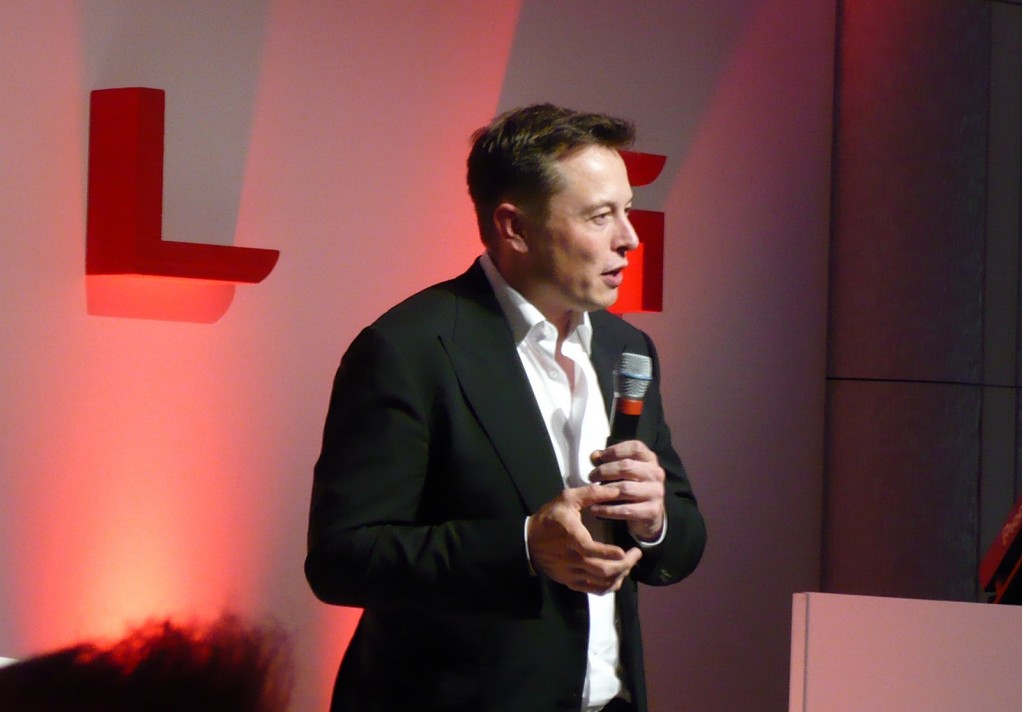The quarterly earnings conference calls held by Tesla Motors are always intriguing, and so it was with last week's second-quarter update.
Financial analysts focused on the company's numbers--it's still losing money as it invests, and a fresh capital raise seems inevitable--but another topic raised some new business prospects.
That would be Tesla CEO Elon Musk's elliptical suggestion that the company might use its planned autonomous electric vehicles to offer its own ride-sharing service.
DON'T MISS: Uber CEO To Tesla: Sell Me Half A Million Autonomous Electric Cars In 2020
As noted by Autoblog, the suggestion was spurred by a query from regular attendee Adam Jonas.
He's a Morgan Stanley analyst who has been an early Tesla supporter within the financial community.

London anti-Uber taxi protest: June 11, 2014 (photo by Flickr user David Holt)
Jonas raised the comment by Tesla board member and venture capitalist Steve Jurvetson that Uber CEO Travis Kalanick said his company would buy up to half a million autonomous electric cars in 2020 if Tesla could supply them.
Here's the full exchange, as contained in this transcript of the earnings call:
Jonas: Hey, Elon, Deepak. First question, Steve Jurvetson was recently quoted saying that Uber CEO Travis Kalanick told him that if, by 2020, Tesla's cars are autonomous, that he'd want to buy all of them.
Is this a real – I mean, forget like the 2020 for a moment, but is this a real business opportunity for Tesla, supplying cars to ride-sharing firms, or does Tesla just cut out the middleman and sell on-demand electric mobility services directly from the company on its own platform?
Musk: That's an insightful question.

Tesla Motors CEO Elon Musk at Tesla Store opening in Westfield Mall, London, Oct 2013
Jonas: You don't have to answer it.
Musk: I think – I don't think I should answer it.
Tesla has discussed autonomous driving capabilities for several years now.
On the call, Musk also said it's in the final phases of testing the first release of what it calls its "Autopilot" for Model S cars equipped with the necessary sensors.
A small number of Model S beta testers will get that software release this weekend, he said, and a wider release will take place in six to eight weeks.
ALSO SEE: Self-Driving Cars From Tesla In About 3 Years, Says CEO Elon Musk (Sep 2014)
A bit of perspective is necessary here, however.
Autonomous driving capabilities clearly offer the promise of freeing drivers from the most tedious, infuriating drives--think 45- to 90-minute stop-and-go rush-hour commutes.
But the rollout of those capabilities by carmakers will be piecemeal, fragmentary, and very cautious over the next five to 15 years.
![2015 Tesla Model S P85D - 'Chiseled by man and nature' [photo: George Parrott] 2015 Tesla Model S P85D - 'Chiseled by man and nature' [photo: George Parrott]](https://images.hgmsites.net/lrg/2015-tesla-model-s-p85d--chiseled-by-man-and-nature-photo-george-parrott_100509286_l.jpg)
2015 Tesla Model S P85D - 'Chiseled by man and nature' [photo: George Parrott]
The consensus among automotive technology analysts is that only in 2030 or so will it be possible to tell your car where you want to go, then curl up for some additional sleep while it takes you there.
In the meantime, as Musk has noted, there are numerous "edge cases" that have to be dealt with--including, for example, faded lane markings on pale grey road surfaces at sunset.
On the call, he cautioned that Tesla drivers should have realistic expectations in the early years:
We don't want to set the expectation ... that you can just basically pay no attention to what the car is doing; we do want to set the expectation that it's much like the Autopilot in a plane where you turn the Autopilot on in a plane but there's still some expectation that the pilot will pay attention to what the plane is doing and won't sort of go to sleep or disappear from the cockpit.
So we do want to set that expectation with consumers.
And, Musk noted, that first limited Autopilot release will be continuously evolved.

A semi-autonomous BMW 5 Series, on the highway outside of Munich
"It will get better over time as we refine the software," Musk concluded.
"So I would certainly not take the initial version of Autopilot as the final version," he said. "It will just get better and better over time."
So Tesla may well be assessing its ability to offer autonomous electric vehicles for its own ride-sharing service at some point in the future.
But before it does that, it must launch this year's Model X electric crossover utility vehicle; get its first battery Gigafactory in Nevada up and running; grow its home-energy battery storage business; and design, engineer, test, and launch its $35,000 Model 3 car with a 200-mile range.
![Tesla gigafactory as photographed by drone, May 17, 2015 [screen capture from YouTube video] Tesla gigafactory as photographed by drone, May 17, 2015 [screen capture from YouTube video]](https://images.hgmsites.net/lrg/tesla-gigafactory-as-photographed-by-drone-may-17-2015-screen-capture-from-youtube-video_100510749_l.jpg)
Tesla gigafactory as photographed by drone, May 17, 2015 [screen capture from YouTube video]
While it's doing all that, it must also incrementally add features to the Autopilot functions. As that happens, each new function must be so good that no serious safety issues occur over tens of millions of miles of Tesla travel.
We'd say it's entirely possible that Tesla could launch its own ride-sharing service.
Before it does that, it's got a few other pretty major tasks to accomplish first.
_________________________________________________













